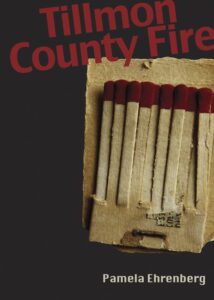Last year Pamela Ehrenberg’s book Ethan Suspended created a loyal fan base, including me. I am thrilled to kick off the blog tour for Pamela’s new novel, Tillmon County Fire, a multi-dimensional, thought-provoking story of small-town life in Appalachia. The gripping plot, unique cast of characters, and the stories they share will keep readers turning the pages.
I’m delighted to share my interview with Pamela.
Tell me about your new book, Tillmon County Fire.
It’s about a couple of kids who set fire to their classmate’s house in an anti-gay hate crime. The story is told from eight different perspectives, the voices of kids who are in one way or another connected to the event. One kid’s story is all in poetry; another story has large chunks of instant-messaging dialogue. There’s even one story told in the third person, which was a big departure for me.
What was your inspiration for the book?
Though the characters and events are fictitious–and the setting is fictitious too–I drew my inspiration for the setting from the year I spent as an AmeriCorps member in Appalachian western Maryland. My inspiration for the storytelling style came from the Ernest Gaines book A Gathering of Old Men. That story was also told in multiple perspectives, and it was a story where the place itself–the community–could be seen as a character in the book.
Was research required?
Most of the research was the first-hand experience of living in an Appalachian community. But I got to do some research on police scanner codes–at one point, my working title for the novel was 477, which is the scanner code for arson. And I researched what kind of birds would have been around that part of the country in April. And the designs on different old-timey bottlecaps. And NYC prep schools, and Carrie Underwood lyrics. Fun stuff. Stuff that probably would have been really time-consuming before the Internet.

What was the most interesting discovery you made during the writing of the book?
I’m afraid that if I choose anything that’s actually in the book, people will think back and say, “gosh, I didn’t find that interesting at all!” But one thing that was interesting to “discover” was the (invented) history of this (imaginary) county where the book takes place. At one point, I had a whole chapter that was a letter written by one of the county’s first settlers, talking about some of the county’s history that tied back into the current story. All that’s left of that chapter now is about a sentence and a half in the prologue. But it was fun to uncover the layers of history in the place. The discovery helped me get to know the county better, even if most of it didn’t make it into the book.
Is there a Jewish link in the book? Why is the connection important?
Yes–Ben, one of the main characters, is one-quarter Jewish, and his father had abandoned the family years earlier to seek a Jewish life that wasn’t possible in this part of Appalachia. Ben begins traveling to a synagogue 60 miles away (the synagogue, by the way, was inspired by the shul where I spent Rosh Hashanah during my AmeriCorps year). He’s an outsider for being part-Jewish but also an outsider within the synagogue–and at the same time, this experience gives him a space to work through some of the other issues he’s struggling with, some of the other ways he’s an outsider.
Be sure to follow Pamela on the rest of her tour! Check out the details on her website at http://www.pamelaehrenberg.com/
